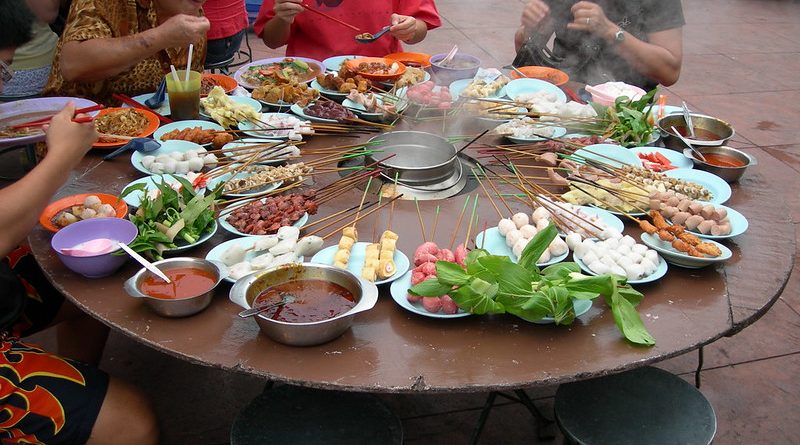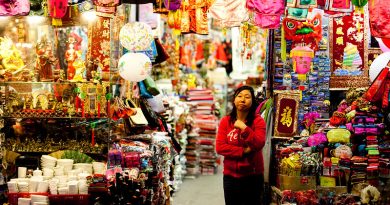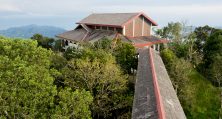Malaysian Food Guide
Food Facts
Staples: Coconut & coconut milk, exotic fruits like starfruit and pungent durian fruit
Cuisines: fusion Malay, tangy Nyonya,
Best dishes: ayam goreng chicken curry followed by kueh – colourful coconut cakes
Like everything else in Malaysia, the food is a flamboyant mixture of all the people who make up the country. The standard of Indian, Chinese, Thai and many other types of Asian cuisine is incredibly high here, and there are many Western restaurants of varying levels of quality in Kuala Lumpur. There is always an abundance of places to eat wherever you are, from expensive restaurants to simple street stalls and hawker centres. Be warned – many travellers find themselves putting on weight during their stay here!
Food in Malaysia is incredibly safe, with high standards of hygiene prevailing even on the street stalls. Drinking water in Malaysia is generally considered safe straight from the tap, but many locals do tend to boil the water first, so it may be wise to follow their lead. It is best to drink bottled water if you are on one of the islands or trekking in East Malaysia. The same applies to salads, which are fine apart from in remote areas.
Malay Cuisine
Traditional Malay cuisine is a melting pot of a variety of neighbouring influences, but the overriding feature is spicy, flavourful dishes that incorporate a variety of fresh herbs and seasonings, pounded with dried spices to create concentrated pastes. Coconut and coconut milk are major ingredients in many Malay dishes, which are generally served with rice or noodles.
Specialities include ayam goreng (‘i-am gore-eng’), chicken marinated in spices such as turmeric and curry powder and fried; roti canai (‘row-tee chan-I’), a type of thick pancake-style bread served with a curry sauce, often eaten at breakfast, and nasi goreng (‘na-see gore-eng’), fried rice with strips of omelette.
One of the best ways to try any cuisine in Malaysia is at the hawker centres, where food is cheap, authentic and freshly prepared.
Nyonya (Staits Chinese) Cuisine
Nyonya is a distinct form of Malaysian cuisine that evolved with descendants of the intermarriages of Chinese immigrants with the local population in Melaka over 400 years ago. The people are referred to as the Baba Nyonya people, with Baba referring to the men and Nyonya to the women. Their food is a fusion of traditional Chinese and local food, creating a unique flavour. Native to Melaka, it has since spread to Penang and Singapore, with subtle differences in each area. More coconut and Malay spices are used in Melaka while more sour and hot Thai styles influence Nyonya cuisine in Penang.
Nyonya cuisine focuses on the blending of tangy, aromatic spices, and therefore tends to require a great deal of preparation, but the results are well worth it. Specialities include brinjal curry, prawn sambal and kueh (‘kway’), or kuih (‘kwee’) in the singular – these are very sweet, brightly coloured cakes, sold in shops and on street corners all over Malaysia, with coconut as the basic ingredient in many forms.
Recommended restaurants are the Flaming Pot in Burma Square and the Nyonya Corner onJalan Nagore in Georgetown, Penang. Melaka boasts perhaps the most renowned Nyonya restaurant in Malaysia – Jonkers Melaka Restaurant, which puts a modern twist on the authentic dishes.
Fruit of the Earth
Malaysia’s humid tropical climate makes it an incredibly fertile country and an astonishing variety of fruits grow to huge proportions, while remaining delightfully sweet. Pineapples, bananas, coconuts, mangos and melons are found in abundance, alongside more exotic fruits such as jackfruit, papayas, rambutans, mangosteens, starfruit and lychees, to name but a few.
Malaysia’s most notorious fruit is the durian, the so-called “king of fruits”, which locals and tourists alike are guaranteed to either adore or detest. The fruit is encased in a heavy green shell slightly larger than a coconut, which is distinguished by thick spiky thorns – it is recommended that you don’t stand underneath a durian tree as a blow from a falling fruit could be fatal!
Its most distinctive characteristic is the smell – incredibly pungent and unmistakable, it is inescapable and indescribable! It is not at all uncommon to see signs up in hotels banning durians from their premises because the odour is so strong. The fruit itself has a very soft, creamy texture and tastes incredibly sweet.
More Information
Dine Malaysia
This site is a base for fans of Malay food in Asia. Dine Malaysia is a comprehensive online guide to eating out in Malaysia for everyone who is passionate about good food and great dining experiences. Malaysia’s rich and diverse culture is reflected here in the broad range of cuisines and outlets featured on the website.
A Beginners Guide to Street Food in Kuala Lumpur
Dive in and explore the mind-boggling array of street food on offer!
Great Blog about Malaysian Food and recipes
Migrationology.com is where “people who love to eat and travel” come to experience and get a flavour for delicious food from around the world and from across cultures.
vkeong.com
A great food blog dedicated to Malaysian cuisine. Mouth-watering recipes and tempting photography. Makes you want to dive right in and taste what is on your screen.
Buzzfeed’s List of Must Try Malaysian Foods – a fun list of street food treats!
Durian: the World’s smelliest Fruit
Amusing article in Britain’s Guardian newspaper.
How to eat Durian Fruit
Useful article with step-by-step instructions
by Zaynin Kanji




